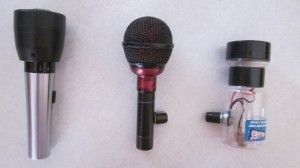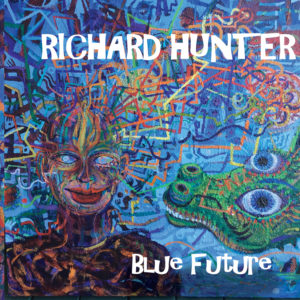
What a Difference a Mic Makes, Part 2 (of 2)
I published samples recently of a set of blues licks played with three different mics–the Shure 545SD, Audix Fireball, and Bottle o’ Blues–through my Digitech RP500 with a patch of mine that models a Gibson GA-40 amp and cabinet. The clear conclusion I came to in that post was that a traditional blues mic–the kind that comes in a bullet shape–is tops for blues, whether you’re playing through an amp or an amp modeler.
I promised in that post to publish more samples, because amped blues isn’t the only thing you might want to play on a harmonica. It’s not the only thing I want to play, that’s for sure. Check out my latest record “The Lucky One” with the player below. There’s plenty of blues in it, and it’s also got plenty of sounds you never hear from the harp in a blues band. All harmonica tracks on the record were recorded with an Audix Fireball V mic and a Digitech RP500 running my patch set. You can find out more about how I recorded the harmonica tracks for this record here.
In this post I provide samples of three different RP500 patches–one with a rotary speaker model, one with a TC Electronics chorus model, and one that combines the TC chorus with a long delay–used with each of three different mics: the Audix Fireball, the Shure 545SD (with Bulletizer by Greg Heumann), and the Bottle o’ Blues (which aced the blues test, as noted above). The samples were recorded live with my Zoom H4 positioned a foot in front of my Peavey KB2 amp. No modifications were made to the recordings, other than to normalize the various samples to the same volume level. (

The differences between the mics are remarkable. The Fireball gives the rotary and chorus patches a gorgeous, widescreen kind of sheen, with very rich frequency content. The Shure has a noticeably more restricted tonal palette, but it’s nice and tough, perfectly suitable for all sorts of rock and blues. The Bottle o’ Blues completely smears the harmonica chords and grunges up everything it touches; it certainly wouldn’t be my first choice for any chordal accompaniment part, at least not if the actual notes in the chord (as opposed to the thick sound of a mass of pitches played at once) mattered.
Fireball with TC Electronic Chorus model
545SD with TC Electronic Chorus model
Bottle ‘o Blues with TC Electronic Chorus model
Fireball with rotary speaker model
545SD with rotary speaker model
Bottle ‘o Blues with rotary speaker model
Extended Fireball with TC Electronics Chorus model plus delay
Fireball TC Electronics Chorus model plus delay
545SD with TC Electronic Chorus model plus delay
Bottle ‘o Blues TC Electronics Chorus model plus delay
See what you think. For now, I’m stickin’ with the Fireball, but I’m keeping the 545 and the BoB near to hand for those occasions where a big nasty blue sound is exactly what’s needed.
If you liked that, you’ll like these:
the 21st century blues harmonica manifesto in sound
Get it on Amazon
Get it on iTunes
the rock harmonica masterpiece
Get it on Amazon
Get it on iTunes
Related Posts
Leave a Reply
You must be logged in to post a comment.
WHAT’S NEW
Categories
- Audio/Video
- Blog
- Blue Future
- Digitech RP Tricks and Tips
- Discography, CDs, Projects, Info, Notes
- Featured Video
- For the Beginner
- Gallery
- Hunter's Effects
- Hunter's Music
- Huntersounds for Fender Mustang
- Meet the Pros
- More Video
- MPH: Maw/Preston/Hunter
- My Three Big Contributions
- Player's Resources
- Pro Tips & Techniques
- Recommended Artists & Recordings
- Recommended Gear
- Recorded Performances
- Reviews, Interviews, Testimonials
- The Lucky One
- Uncategorized
- Upcoming Performances
- Zoom G3 Tips and Tricks

